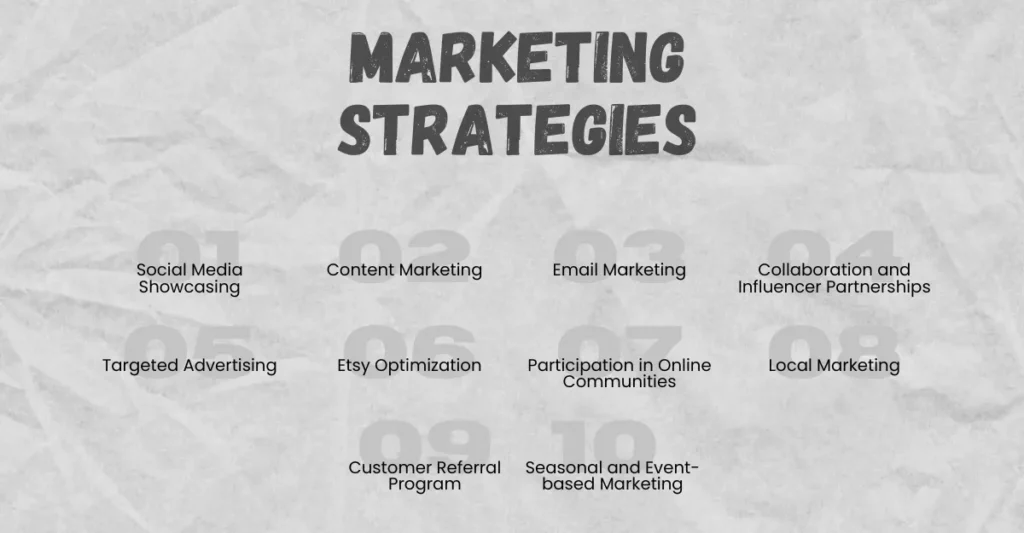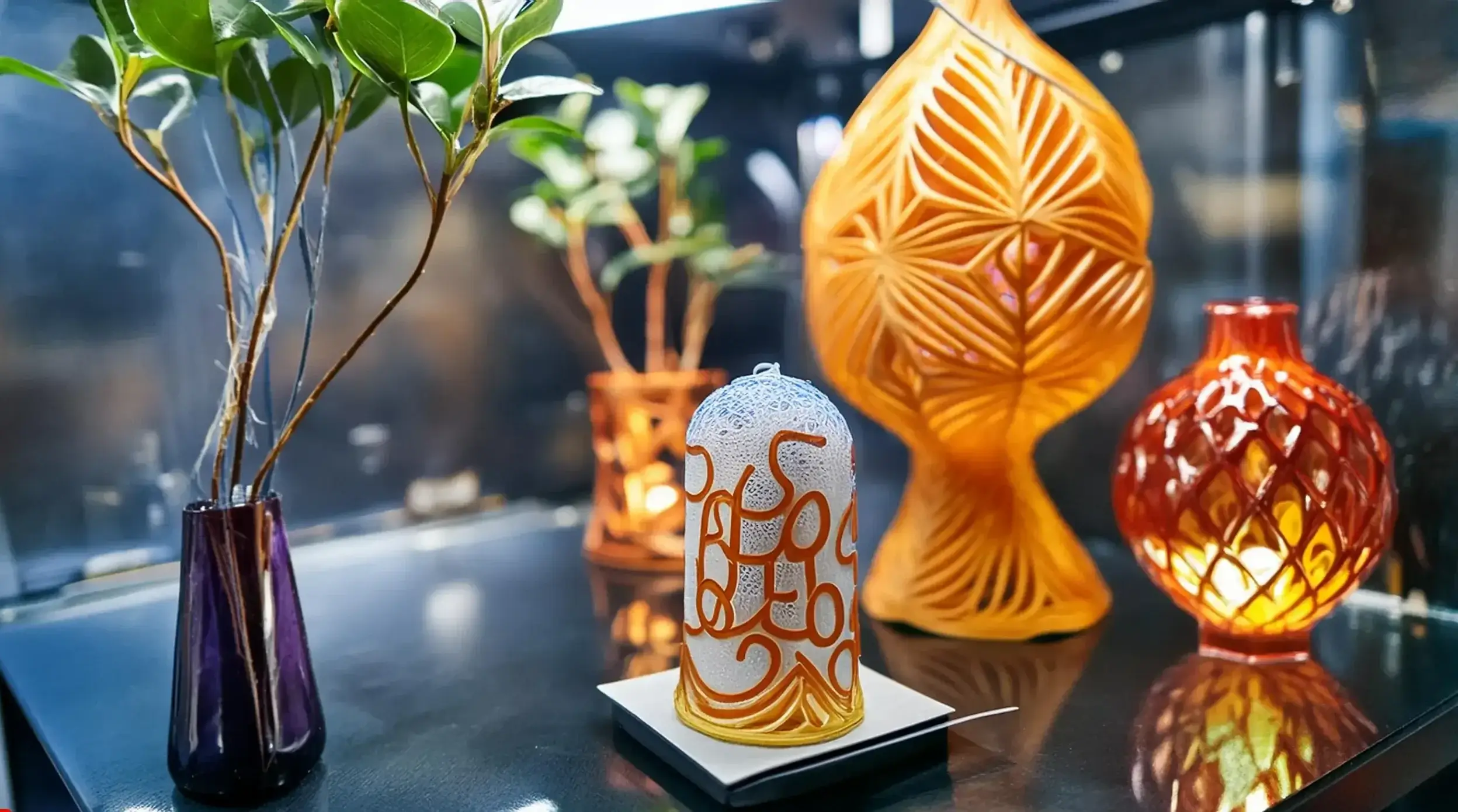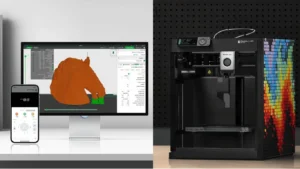This guide explores transforming a 3D printing hobby into a profitable business. It covers niche selection, product ideas, production challenges, marketing strategies & growth expectations. From addressing technical hurdles to implementing effective marketing, it provides a comprehensive roadmap for entrepreneurs looking to succeed in the 3D printing industry. With insights on everything from material costs to customer engagement, this guide equips makers with the knowledge to turn their passion into a sustainable enterprise.(What can you make with a 3d Printer to Sell )
Profitable 3D Printed Products
Here are some product categories that have shown promise in the 3D printing market:
Toys and Fidgets: While the market for crystal dragons may be saturated, there’s still money to be made in toys. Fidget toys consistently perform well, and unique items like Tic Tac guns can bring in over $5,000 a month.
Lighting: Custom 3D printed lights can generate over $1,000 monthly, with the best performers reaching $2,000+.
Gag Gifts: Humor sells! Many joke-themed products are pulling in around $1,000 per month.
Miniatures and Tabletop Gaming: While individual miniatures might not be big earners, tabletop terrain bundles can make up to $2,500 monthly.
Personalized Items: A Pokémon nameplate was found to generate an impressive $6,700 per month.
Home and Garden: Unique planters, like skull designs, can earn up to $4,700 monthly.
Cosplay Items: This niche is thriving, with some products like corrupted swords making $8,000 a month.
Niche Vehicle Accessories: A lower cubby drawer for a Toyota 4Runner was bringing in $3,000 monthly.
Jewelry: While many pieces struggle, standout designs like possum earrings can earn up to $9,000 per month.

What can you make with a 3d Printer to Sell
Production and Business Considerations
When evaluating these niches, keep in mind:
Material Costs: Calculate your expenses for filament, electricity, and printer maintenance. These can significantly impact profitability.
Design Time: Complex items may require hours of design work. Factor this into your pricing.
Print Time: Larger items tie up your printer longer, limiting production capacity.
Quality Control: Consistent quality is crucial for customer satisfaction and repeat business.
Post-Processing: Many items require sanding, painting, or assembly after printing.
Marketing: Building visibility on platforms like Etsy or your own website requires time and potentially advertising costs.
Customer Service: Handling inquiries, customizations, and potential returns takes time away from production.
Shipping: Consider packaging materials and shipping costs in your pricing strategy.

What can you make with a 3d Printer to Sell
Technical Challenges in 3D Printing Production
- Printer Calibration: Achieving consistent quality requires regular maintenance and adjustment.
- Material Selection: Different products may require various filament types, each with its own printing quirks.
- Design for Printability: Creating designs that print reliably without support structures is a skill that takes time to develop.
- Scaling Production: Moving from one-off prints to larger batches presents new challenges in workflow and quality control.
Finding Your Sweet Spot
To find a sustainable niche:
- List your interests, experiences, and areas of expertise.
- Look for overlaps between these areas.
- Evaluate potential niches based on market pain points, growth, accessibility, and buying power.
- Research thoroughly: Look beyond reported earnings to understand the full picture of what it takes to succeed in a niche.
- Start small: Test your products and processes before scaling up.
Marketing Strategies
Effective marketing is crucial for the success of your 3D printing venture. Here are some specific tactics to consider:

1. Social Media Showcasing:
– Instagram: Create a visually appealing feed showcasing your products. Use relevant hashtags like #3Dprinting, #3Ddesign, and niche-specific tags.
– TikTok: Share short videos of your printing process or product demonstrations. The platform’s algorithm can help you reach a wider audience.
– Pinterest: Create boards featuring your products and related design inspirations.
2. Content Marketing:
– Start a blog or YouTube channel discussing 3D printing tips, showcasing your design process, or explaining how your products solve specific problems.
– This positions you as an expert and improves your SEO.
3. Email Marketing:
– Build an email list of customers and potential buyers.
– Send regular newsletters with new product announcements, printing tips, and exclusive offers.
4. Collaboration and Influencer Partnerships:
– Reach out to influencers in your niche (e.g., cosplayers for costume pieces, tabletop gamers for miniatures).
– Offer them products in exchange for honest reviews or demonstrations.
5. Targeted Advertising:
– Use platforms like Facebook Ads or Google Ads to reach specific demographics interested in your products.
– Start with a small budget and A/B test different ad creatives and targeting options.
6. Etsy Optimization:
– Use relevant keywords in your product titles and descriptions.
– Encourage customer reviews to boost your shop’s credibility.
– Utilize Etsy’s advertising options to increase visibility.
7. Participation in Online Communities:
– Join Reddit communities, Facebook groups, or forums related to your niche.
– Provide value through advice and insights before promoting your products.
8. Local Marketing:
– Attend maker faires, craft markets, or conventions related to your niche.
– Network with local businesses that might benefit from your products (e.g., offering custom stands to boutiques).
9. Customer Referral Program:
– Implement a referral system where existing customers get a discount for bringing in new buyers.
10. Seasonal and Event-based Marketing:
– Create special promotions or themed products for holidays or events relevant to your niche.
Remember, the key to effective marketing is consistency and measuring results. Start with a few strategies, track their performance, and adjust your approach based on what works best for your specific products and target audience. As your business grows, you can expand your marketing efforts and potentially seek professional help to scale your strategies.
Conclusion: Turning Passion into Profit
Transforming a 3D printing hobby into a successful business requires strategic thinking, technical skill, and entrepreneurial drive. By identifying the right niche, mastering production challenges, and implementing effective marketing strategies, you can create a viable enterprise. Start small, focus on quality, and be prepared to adapt. With persistence and innovation, your 3D printing passion can evolve into a thriving business. Remember to stay current with industry trends and continuously refine your approach. Success in this dynamic field comes to those who blend creativity with smart business practices. Keep learning, stay focused, and enjoy the journey of building your 3D printing business. What can you make with a 3d Printer to Sell
:FAQs:
What can you make with a 3D printer?
The possibilities with 3D printing are vast. You can create:
• Household items: Organizers, hooks, custom knobs, smartphone stands
• Decorative objects: Vases, sculptures, figurines, custom picture frames
• Functional parts: Replacement parts for appliances, custom tools, gadget cases
• Prototypes: For product development or architectural models
• Educational models: Anatomical models, molecular structures, historical artifacts
• Toys and games: Custom game pieces, action figures, puzzles
• Jewelry and fashion accessories: Pendants, earrings, buttons, hair accessories
• Cosplay and prop items: Costume pieces, replicas of movie props
• Tech accessories: Laptop stands, cable organizers, custom computer cases
What can I make with a 3D printer to sell?
Popular items to sell include:
• Customized jewelry and accessories
• Unique home decor items
• Niche product solutions (e.g., specialized organizers)
• Custom figurines or miniatures
• Personalized gifts (e.g., name plaques, pet tags)
• Cosplay and costume accessories
• Tabletop gaming accessories
• Architectural models or prototypes
Educational aids and models
What should I make with a 3D printer?
The best things to make depend on your interests and skills. Consider:
• Items that solve a problem you or others face
• Objects related to your hobbies or profession
• Improved versions of existing products
• Unique designs that showcase your creativity
• Prototypes of your inventions
• Custom gifts for friends and family
What can be made with a 3D printer in terms of materials?
3D printers can work with various materials, including:
• Plastics: PLA, ABS, PETG, Nylon
• Flexible materials: TPU, TPE
• Wood-infused filaments
• Metal-infused filaments
• Ceramic-like materials
• Biodegradable materials
• Conductive filaments
• Glow-in-the-dark materials
What are some unique or unexpected things I can make with a 3D printer?
Some interesting and unexpected applications include:.
• Custom prosthetics or assistive devices
• Architectural models for urban planning
• Replicas of fossils or artifacts for museums
• Custom drone parts
• Molds for casting other materials
• Customized musical instruments or parts
• Specialized scientific equipment
• Personalized medical models for surgical planning
• Custom fishing lures
• Unique cake toppers or food molds
What are the limitations of what I can make with a 3D printer?
While 3D printers are versatile, there are some limitations:
• Size: Limited by the printer’s build volume
• Material properties: Not all materials are food-safe or durable enough for all applications
• Precision: Consumer-grade printers may not achieve the precision needed for some applications
• Time: Large or complex prints can take many hours
• Post-processing: Many prints require finishing work like sanding or painting
• Legal considerations: Avoid printing copyrighted designs or regulated items like weapons
How do I decide what to make with my 3D printer?
To choose what to make:
• Identify problems or needs in your daily life that a custom object could solve
• Explore online 3D model repositories for inspiration
• Join 3D printing communities to see what others are creating
• Consider your skills and interests in design and post-processing
• Look for gaps in the market if you’re interested in selling
• Start with simpler projects and gradually tackle more complex designs as you gain experience
What can you make with a 3d Printer to Sell, What can you make with a 3d Printer to Sell, What can you make with a 3d Printer to Sell, What can you make with a 3d Printer to Sell, What can you make with a 3d Printer to Sell, What can you make with a 3d Printer to Sell, What can you make with a 3d Printer to Sell, What can you make with a 3d Printer to Sell, What can you make with a 3d Printer to Sell, What can you make with a 3d Printer to Sell, What can you make with a 3d Printer to Sell, What can you make with a 3d Printer to Sell, What can you make with a 3d Printer to Sell, What can you make with a 3d Printer to Sell, What can you make with a 3d Printer to Sell
Nikko Jenkins is a technology journalist based in the US, covering tool reviews and comparisons across North America, Europe and Asia, particularly 3D Printers. His concise, insightful articles on the latest innovations help readers worldwide make informed tech decisions. Jenkins’ expertise and engaging style have made him a respected voice in the global technology landscape.
Feel free to reach out to me at nikkojenkins@360techinsights.com.




